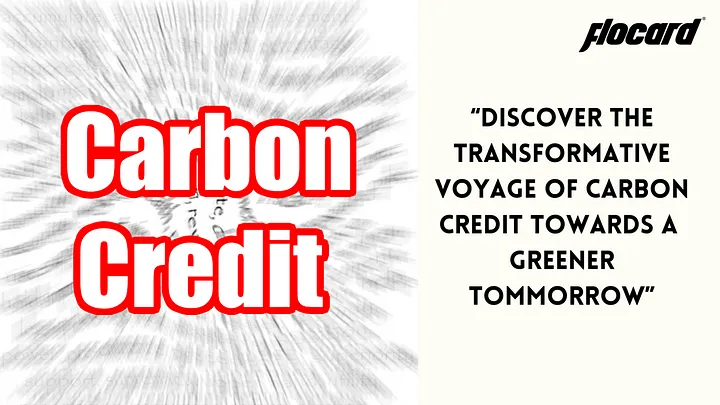Carbon Credits Uncovered: Pioneering the Charge Against Climate Change

Navigating the Carbon Credit Pathway: A Leap Towards Environmental Sustainability
Embracing Change for a Greener Future
Imagine a society where every individual and company can positively impact the environment. Carbon credits are not just a concept but a practical means for everyone eager to contribute to climate action. This blog discusses carbon credits, their workings, and how they enable us to positively impact a sustainable future that we can proudly pass on to future generations. Welcome to the journey of accepting change and crafting a greener future, one credit at a time.
The History of Carbon Credits
Carbon trading was legally established in 1997, with over 150 countries ratifying the United Nations Kyoto Protocol on climate change. Parties committed to reducing their greenhouse gas emissions by 5.4% between 2008 and 2012 from 1990 levels. The Kyoto Protocol allowed nations to sell surplus emission units to others exceeding their limits, introducing emission trading. Since the 2005 Kyoto Protocol, nearly every nation has developed policies for reducing harmful gas emissions, including carbon. Carbon credits have become a popular offset option, increasingly utilized by businesses worldwide.
Understanding Carbon Credits
Carbon credits, or carbon offsets, are permits allowing the holder to emit a certain amount of greenhouse gases. Businesses are allocated credits permitting emissions up to a decreasing limit and can sell unused credits. This system motivates private entities to reduce greenhouse gas emissions by financially penalizing emissions over the cap and rewarding the sale of unused allowances and carbon reductions.
Establishment of Carbon Offset Projects:
Developers design and implement projects to reduce greenhouse gas emissions, which could include methane capture, renewable energy, reforestation, or sustainable farming. Projects adhere to specific protocols calculating emission reduction potential.
Project Validation and Verification:
Projects undergo a third-party verification process, ensuring the authenticity of the carbon credits produced. An independent auditor evaluates the project’s emission claims against baseline emissions, ensuring compliance with carbon certification standards like Verra’s VCS.
Carbon Credits Issuance:
Once verified and validated, certifiers issue carbon credits, which are meticulously tracked, ensuring transparency and accountability in the carbon market.
Sale and Purchase of Carbon Credits:
Stakeholders, including businesses, individuals, investors, and sometimes governments, purchase carbon credits to offset their emissions, fostering a dynamic carbon market that encourages sustainability innovations.
Retirement of Carbon Credits:
Credits are retired to ensure they are not double-counted, maintaining the integrity of the carbon market.
Growth of the Voluntary Carbon Market
The voluntary carbon market has grown significantly, with purchases increasing fivefold from 2021 through the first three quarters of 2023. The development of verified carbon standards and the Clean Development Mechanism has been pivotal, ensuring offsets represent real emission reductions and supporting the fight against climate change.
Challenges and Criticisms
Despite its advantages, the carbon credit system faces criticisms, including concerns over its efficacy and accusations of “greenwashing.” The industry also struggles with standardization, integrity, and transparency.
Overcoming Challenges
Efforts to standardize, improve verification, assess additionality, and involve stakeholders aim to enhance the market’s effectiveness and environmental integrity.
The Potential of Carbon Credits
Innovations like blockchain technology could revolutionize carbon credit verification, offering unprecedented transparency. Incorporating carbon credits into SDG strategies signifies a shift towards comprehensive sustainability frameworks, emphasizing corporate responsibility and the demand for high-quality offsets.
Cooperation Towards a Sustainable Future
The journey of carbon credits is one of collaboration and progress. Despite obstacles, standardization, verification, and stakeholder engagement initiatives bring us closer to a sustainable future. Let’s explore the potential of carbon credits with optimism, as each credit represents a step towards a greener planet.
Join the Movement with FloCard
We all have a role in reducing our carbon footprint. An effective way to do this is by offsetting emissions through carbon credits. Partner with FloCard, an innovative platform simplifying emission offsetting. Support carbon offset projects and contribute to a sustainable future for generations to come.
